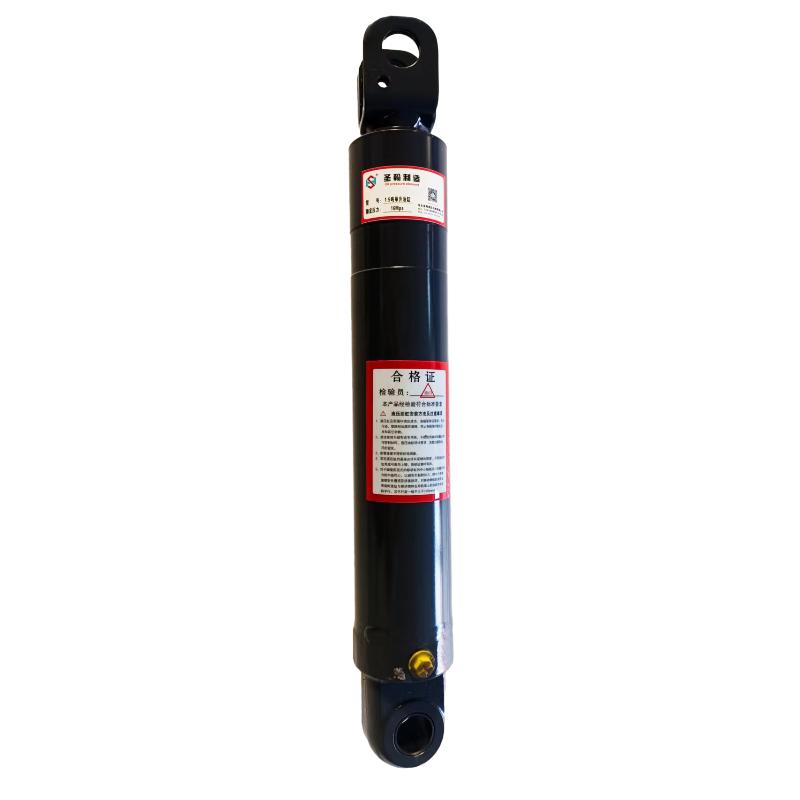Jul . 22, 2024 02:47 Back to list
Understanding the Features and Benefits of Hydraulic Mill Cylinder Products for Efficient Operations
The Hydraulic Mill Cylinder A Cornerstone of Modern Manufacturing
In the world of manufacturing and heavy machinery, the hydraulic mill cylinder is a vital component that plays a crucial role in various applications. This powerful device harnesses the principles of hydraulics to transmit force and motion, allowing industries to carry out complex tasks efficiently and effectively. From construction and agriculture to manufacturing and recycling, the hydraulic mill cylinder serves as the backbone of many mechanical processes.
Understanding Hydraulic Mill Cylinders
At its core, a hydraulic mill cylinder functions by utilizing pressurized fluid to create mechanical motion. The basic components of a hydraulic cylinder include a cylindrical chamber, a piston, and two end caps. When hydraulic fluid is pumped into the cylinder, it exerts pressure on the piston, causing it to move. This linear motion can then be harnessed to perform various tasks, such as lifting heavy loads, pressing materials, or providing force for machining operations.
The efficiency of hydraulic systems is one of the key reasons why hydraulic mill cylinders are so widely used. They can deliver substantial force relative to their size, making them particularly suitable for applications where space is limited or where powerful force is required. Moreover, hydraulic systems are inherently smoother and quieter than mechanical systems, which is an essential consideration in many industrial environments.
Applications of Hydraulic Mill Cylinders
Hydraulic mill cylinders find applications across numerous industries. In construction, they are used in excavators, cranes, and loaders, enabling these machines to lift and move heavy materials with precision. In agriculture, hydraulic cylinders are integral to the operation of tractors and other farming equipment, facilitating tasks such as plowing, lifting, and harvesting.
hydraulic mill cylinder product

Additionally, the manufacturing sector benefits from hydraulic mill cylinders in machinery designed for metal forming and fabrication. For instance, hydraulic presses use these cylinders to apply constant pressure, ensuring uniform shaping of materials. Furthermore, in recycling facilities, hydraulic systems are employed to compact and process waste materials, making it easier to transport and recycle them.
Advancements in Hydraulic Technology
The ongoing development in hydraulic technology continues to enhance the performance and reliability of hydraulic mill cylinders. Innovations such as advanced sealing systems, high-pressure materials, and electronic controls have resulted in cylinders that are more durable and efficient, with capabilities to withstand extreme conditions and loads.
Moreover, the integration of smart technology into hydraulic systems is revolutionizing their operation. Sensors and IoT (Internet of Things) devices are enabling real-time monitoring of hydraulic cylinders, allowing for predictive maintenance and optimization of performance. This shift towards smart manufacturing not only improves operational efficiency but also contributes to reducing downtime and costs.
Conclusion
The hydraulic mill cylinder is an essential element in the machinery landscape, providing the mechanical advantage needed to perform various industrial tasks. Its versatility and efficiency make it a preferred choice in multiple applications. As technology continues to evolve, the hydraulic mill cylinder will likely become even more advanced, ensuring its role as a fundamental component in the drive towards more efficient and automated manufacturing processes. Embracing these advancements not only benefits manufacturers but also leads to enhanced productivity and sustainability in modern industry.
-
Fork Lift Power Units - Hebei Shenghan | Efficiency, Reliability
NewsJul.13,2025
-
1.5-Ton Turbocharged Cylinder-Hebei Shenghan|Hydraulic Solution,Energy Efficiency
NewsJul.13,2025
-
Auto Hoist Power Units-Hebei Shenghan|Efficiency&Industrial Lifting
NewsJul.13,2025
-
Double Acting Power Units-Hebei Shenghan|Hydraulic Solutions,Industrial Efficiency
NewsJul.13,2025
-
1.5 Ton Lifting Cylinder 70/82-40-290-535 - High-Performance Hydraulic Solution | Hebei Shenghan
NewsJul.13,2025
-
Fork Lift Power Units - Hebei Shenghan | Efficiency&Reliability
NewsJul.13,2025
